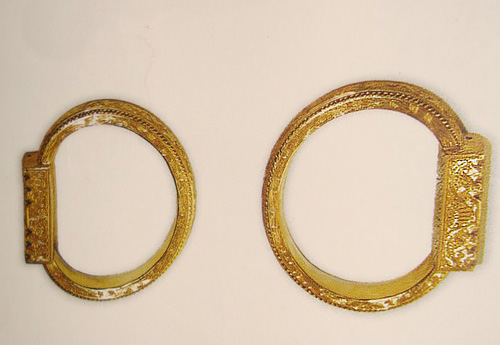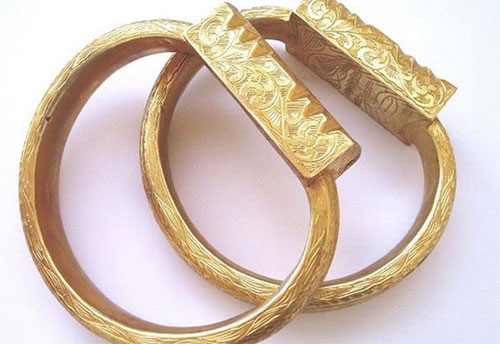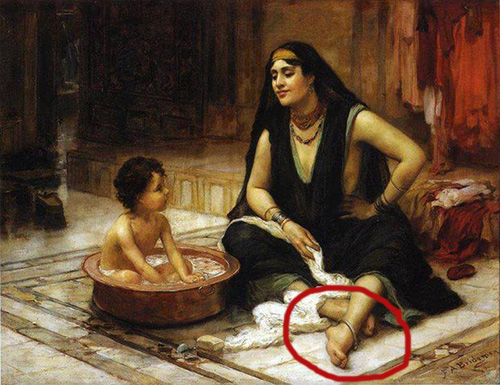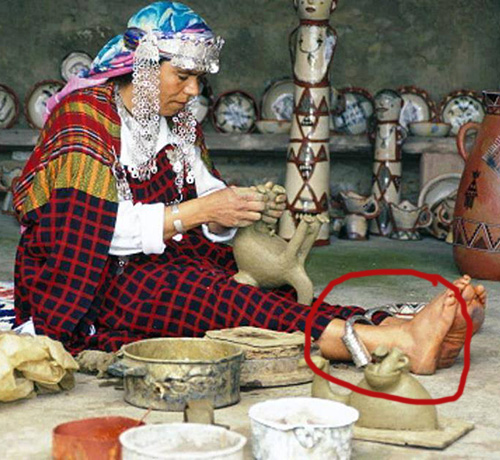 One of the most intriguing and meaningful Tunisian traditional jewelry pieces is the so-called “kholkhal”. In this material, we’ll try to tell you more about it. What’s the purpose of this item? How does it look? How much does it weigh? Does it have a particular shape and embellishments? We’ve gathered and arranged all the info about the kholkhal we could find and we’re glad to share it with you. Promise to surprise you!
One of the most intriguing and meaningful Tunisian traditional jewelry pieces is the so-called “kholkhal”. In this material, we’ll try to tell you more about it. What’s the purpose of this item? How does it look? How much does it weigh? Does it have a particular shape and embellishments? We’ve gathered and arranged all the info about the kholkhal we could find and we’re glad to share it with you. Promise to surprise you!
The photos were provided by Mr. Khaled Dridi
So, this is an anklet traditionally used in Tunisia. It is called “kholkhal”. This jewelry originates from the Amazigh or Berber culture and has a pretty long history.
The shape of a kholkhal is always the same – it is a rigid ankle bracelet, round, and with a specific block detail. As you can imagine, this anklet is massive. It is made from solid gold (or sometimes silver, but these are rarer) and gold is heavy, so it weighs about 1 kilo each.

Also, the surface of a kholkhal, including the block detail, is covered with carved patterns. These patterns can be cruder or rather skillfully made and elaborate. The whole design of this piece of jewelry makes it an artful adornment.
Obviously, kholkhal bracelets are very expensive. And they aren’t just any jewels but have a very specific meaning. These anklets originally were presented by Tunisian grooms to their brides as dowry. That’s why they are so massive – they’re meant to show the wealth of a man and be the woman’s personal capital. Jewelry was the equivalent of a woman’s personal bank account in the past; she could sell, give, barter her jewels, do with them whatever she considered right at the time. We’re not sure if Tunisian couples still keep this wedding tradition, but probably some of them do. Besides, a large gold anklet is an outstanding wedding gift, isn’t it?

When the mentioned wedding tradition to present the bride with kholkhal bracelets still was popular, it was a way for the groom to find out more about his future wife. They listened for the sound the anklets made. If the woman’s legs were thin, the bracelets were loose and jingled; if she had fuller ankles, she walked with a so-called “mute kholkhal”. Remember that men didn’t have any way of sizing up their future bride’s body under all those clothes, so they appreciated every opportunity. We’re still to fully verify this info (though, it seems logical), so if you can confirm or refute this, please let us know in the comments.

The bride was to wear her kholkhal anklets during her wedding – all 7 days and nights of it (that’s how long a Tunisian wedding traditionally lasted). And then, she wore it whenever she wanted, even in day-to-day life.
The traditional gold and silver kholkhal anklets are used by Tunisian women even today, though they are often worn just as ordinary jewelry pieces, without any symbolic meaning. These ankle bracelets are beautiful and fancy, so why not.




